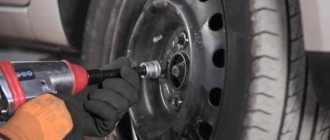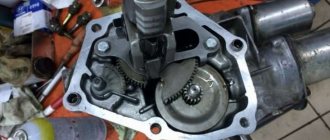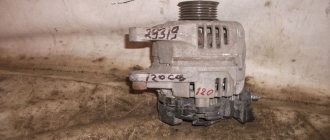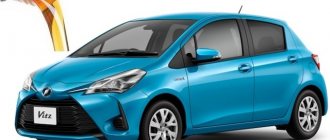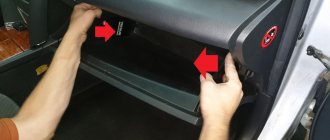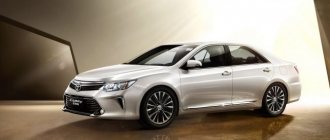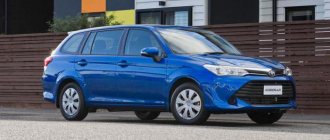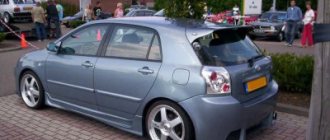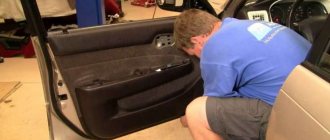Every car enthusiast knows that sooner or later his car may break down. The reasons are different. For example, if the car begins to make different sounds, similar to noise or grinding, then it may be a problem with the brake pads. Or rather, in the stones that ended up between the discs and the pad. As for a car like a Toyota Corolla, most likely you will need to replace the wheel bearing. The question is, front or rear. Or maybe both at once.
There is no need to neglect the replacement process, as this can lead to more serious consequences and breakdown.
The structure of the front and rear hubs are very similar to each other, so at first glance it is difficult to figure out which of them requires replacement.
How to determine a faulty front wheel bearing on a Toyota Corolla 120 - 150
This unit is quite reliable and, with proper operation, can last quite a long time. But there are reasons why repairs will be required earlier:
- aggressive driving without taking into account the road surface;
- water getting under the seal and washing out the lubricant;
- driving with overload;
Signs that your car will soon need a new bearing may be:
- presence of a constant hum in the area of the front wheel.
Diagnosing a faulty Toyota Corolla front wheel bearing is quite simple:
- We jack up the car, hang out the wheel, engage the gear and lightly press the gas pedal. If a distinct noise is heard in the area of the axis, then the unit needs repair.
Typical noise test near a rack:
How the front wheel bearing of a Toyota Corolla 150 hums:
Characteristic noise of a ball bearing on a Toyota Corolla E120:
Required Tools for Wheel Bearing Replacement
In order for the wheel bearing replacement to be successful, the tools from the table below are required.
Table - List of required tools
| Name | Note |
| Key | "at 19", "at 22" |
| Screwdriver | Flat blade |
| Balloon wrench | To remove the wheel |
| Puller | For bearings |
| Hammer | Medium or large sizes |
| Jack | Not required with a lift |
| Mounts | 2 pcs. |
Front wheel bearing design for Toyota Corolla 2008-2013
Below is a diagram of the assembly layout for models E140, E150 with designations of elements:
- 43501N – hub nut;
- 46512 – brake disc;
- 43501D – disk mounting bolts;
- 43501С – hub assembly;
- 48-02 – steering knuckle;
- 91552-L1250 – knuckle bolt;
- 43-02; - spherical bearing;
The design of the unit in the previous generation Corolla was slightly different:
- 43501H – hub nut;
- 43512 – brake disc;
- 43501С – hub;
- 48-02 – steering knuckle;
- 43501E — front wheel bearings for Toyota Corolla;
- 43501G – retaining ring;
- 43-02 – ball;
During the process, part number 43501 must be replaced.
Note:
The layout of the unit is not tied to the generation of the car. The manufacturer began installing hub assemblies with ball bearings on cars starting in 2012-2013. If your car was produced earlier, the layout probably corresponds to the second scheme, like the E120 2000-2008. Instructions for replacing the part in this article are presented for two variants of the unit design.
Wheel bearing: 4 simple ways to check before it’s too late - Advice from experts
Many people know that there are certain bearings in the wheel area called wheel bearings, and from time to time they wear out. But this is where the ideas about the subject end. No problem! Today we’ll talk in detail about what it is and, most importantly, how to determine the need for replacement. And first, a little theory.
Without abstruse definitions, a wheel bearing is a bearing on which the wheel rotates. Of course, we all removed the wheels (or at least were present at this sacrament) and saw that there were no bearings on the wheel itself, and they were also not visible on the one from which they were removed. Right. Because this bearing stands between the fixed axis of rotation and what the wheel is screwed to . The part that acts as a fixed axis is called a fist
or
trunnion
.
A small clarification: the concept of “axis” in this case is used precisely as the geometric axis of rotation, and not as the shape of the part. For example, in the steering knuckles of a front-wheel drive car, this axis is hollow, and the drive shaft passes inside it. See pictures below.
In turn, the part to which the wheel rim is directly attached is called the hub.
. Thus, if you strain your head a little and imagine everything written above, then the following picture emerges: a bearing is put on the fixed axle (or inserted into it, if there is a drive), and a hub is put on the bearing, to which the wheel is screwed. This is such a simple nesting doll. Now about malfunctions and self-diagnosis.
Diagram of the front hub of a front-wheel drive car.
As you can see, the “hole” for the drive axle passes through the axle and further through all the structural parts. (photo: carfrance.ru) Since today’s hero is not highly complex, the symptoms of the malfunction will be quite clear.
Symptom No. 1
Noises . Those who have ever heard the noise/hum of dry or worn bearings will understand what we are talking about. Those who don’t know shouldn’t despair either. If you have doubts about the serviceability of any hub, simply hang up two wheels of the same axle, put the box in neutral and spin both. I’m sure you can spot a noisy hub right away. The main thing is not to confuse the noise of the bearing with the friction of the pads on the brake disc, so as not to change all four in a fright.

